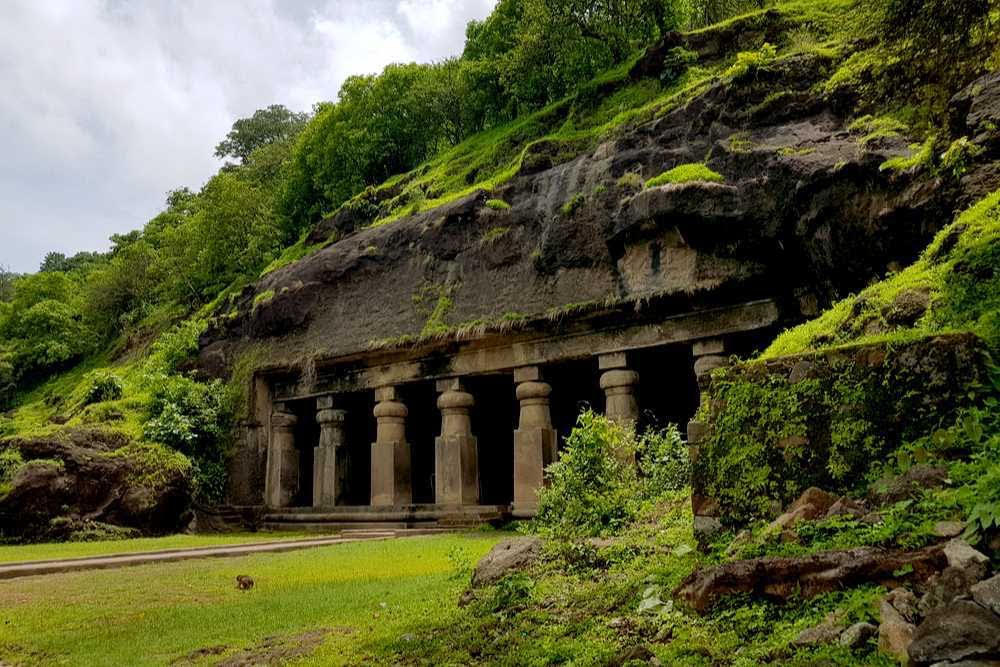Taking a Look at India’s Rich Cultural Heritage: The Magnificent Caves of India

Taking a Look at India’s Rich Cultural Heritage: The Magnificent Caves of India
These caves are like hidden treasures, holding art, history and geological marvels inside.
31st May 2024
India is a fascinating country with many amazing natural and cultural wonders. Among them, caves are some of the most intriguing. These caves were formed over a long time and have witnessed the rise and fall of civilisations. They are found all over India, from the famous Ajanta and Ellora caves in Maharashtra to the lesser-known ones in Meghalaya.
These caves are like hidden treasures, holding art, history and geological marvels inside. People like scholars, pilgrims and adventurers are drawn to them to explore their secrets. Inside, you can find stalactites and stalagmites, along with ancient carvings and writings that tell stories of the past.
Let’s take a look at some of India’s most fascinating caves:
· Ajanta Ellora Caves, Maharashtra:
Located in Jalgaon city, Maharashtra, the Ajanta and Ellora caves rank among India’s renowned cave complexes. Carved into rock, these caves feature ancient religious artworks. Ellora comprises 34 caves dating from the 6th to 11th centuries AD, while Ajanta boasts 29 caves ranging from the 2nd century BC to the 6th century AD. Ajanta’s caves primarily focus on Buddhism, whereas Ellora showcases a blend of Buddhism, Hinduism and Jainism. These caves stand as iconic symbols of India’s rich cultural and religious heritage.
· Undavalli Caves, Andhra Pradesh:
Located approximately 8 kilometres from Vijayawada in Andhra Pradesh, the Undavalli Caves rest on the banks of the River Krishna. Tradition holds that these caves were constructed by the Vishnukundin Kings around the 7th century AD. Hewn from solid sandstone, these ancient caverns are devoted to Anantapadmanabha Swamy and Narasimha Swamy. Among the various cave formations, the most notable features a four-story structure housing a colossal reclining statue of Lord Vishnu.
· Borra Caves, Visakhapatnam:
Situated amidst the Ananthagiri Hills within the Araku valley of Visakhapatnam, the Borra Caves hold a significant presence. Tribal communities residing in nearby villages revere these caves, particularly due to the natural formation of a Shiva Lingam inside. Covering an expanse of approximately 1 square kilometre, the Borra Caves boast an array of stalagmite and stalactite formations, adding to their allure.
· Udayagiri Caves, Odisha:
Near Bhubaneswar in Odisha, the ancient Udayagiri caves are renowned. These caves, dating back to the Gupta Period (around 350-550 CE), feature 33 rock-cut chambers adorned with Hindu and Jain sculptures and murals. They reflect the foundational era of Hindu religious concepts. Among the notable features is a prominent 5 feet tall statue depicting Vishnu’s Boar Avatar, with devotees shown paying homage on either side.
· Elephanta Caves, Maharashtra:
Situated approximately 7 kilometres from Mumbai on an island, the Elephanta Caves are accessible solely via ferry. These caves comprise seven intricately carved and designed rock-cut chambers. Dating back to the 6th century AD, the main highlight of these caves is the Mahesh-murti, which portrays Lord Shiva in three distinct forms: aghora, tatpurusha and vamadeva.
· Badami Caves, Karnataka:
Situated in Karnataka, the Badami caves consist of four caverns, with two dedicated to Lord Vishnu, one to Lord Shiva and another to Jains. Carved from red sandstone on the edge of a hill, the Badami Caves represent a prime specimen of Indian rock-cut architecture. These ancient caves trace their origins back to the 6th century AD.
· Bhimbetka Caves, Madhya Pradesh-
Nestled within the Ratapani Wildlife Sanctuary in Madhya Pradesh, the Bhimbetka Caves hold the distinction of being a UNESCO World Heritage Site. These caves showcase some of the earliest artworks created by humans. Legend has it that the caves served as a refuge for the Pandavas during their exile, adding significant historical value to this site among the caves of India.
· Krem Liat Prah, Meghalaya:
Located in the Jaintia Hills district of Meghalaya, Krem Liat Prah is nestled within the Shnongrim Ridge, making it India’s longest natural cave. Among the 150 caves in the ridge, Krem Liat Prah stands out, with some sections still awaiting exploration. Stretching approximately 34 kilometres, the cave’s length continues to grow as ongoing surveys uncover more of its extent.








